How to easily grow solar marigolds outdoors?
Many growers love to grow marigolds - planting and caring in the open field is not difficult. After all, these Americans are very undemanding and can grow in almost any conditions. These lush and bright black shaves, this is how these flowers are called in Ukrainian, will bloom before the onset of frost.
Marigold
Small bushes with a strong and dense stem can reach a height of even a meter. Such varieties will look great in a single planting. Low-growing varieties can be perfectly placed on the balcony or in seedling containers on the site. The height of the bush, depending on the variety, varies from 10 to 130 cm.
Straight branched stems are able to form a lush mini - bush that looks pretty in a flower bed. One plant can have several lush inflorescences that delight with bright flowers from early summer to late autumn. Seeds scattered on the ground can sprout on their own next year - they have a high similarity.
A large number of marigold varieties are known: annual and perennial, dwarf and giant, simple and double. All of these varieties require similar growing conditions and planting characteristics.
Outdoor cultivation
You can grow flowers by seeds. Initially, they can be bought in a specialized store or taken from friends. Subsequently, for planting, you can use your own seed collected in the fall.
Important: Most hybrids when planted with harvested seeds lose their characteristics. As a result, you can get a flower that is different from the original one.
Marigolds are cultivated in two ways: by sowing seeds directly into the prepared soil or by seedling. When choosing a growing method, the following factors must be taken into account:
- the climate of a particular area;
- night temperature;
- the probability of spring frosts;
- preferred flowering time of bushes.
Having decided on the growing method, they start sowing seeds.
Sowing directly into the soil
In this way, it is worth growing plants in the southern regions, where there is a low probability of night frosts. It is best to plant seeds in May, when the night temperature has settled from 7 degrees. When sowing seeds, it is important to consider the following features:
- soil preparation - it must be nutritious;
- seed preparation - you can germinate seeds before sowing;
Tip: To germinate seeds, they need to be put in a damp cloth, wrapped in plastic and placed on a warm windowsill under the sun's rays for 2 - 3 days.
- sowing seeds - in small pits up to 5 cm deep or a shallow groove;
- planting scheme - it is necessary to leave a distance between future bushes that allows all plants to develop normally, it depends on the height of the future bush and its branching;
- having sprinkled the holes with soil, they need to be spilled with water;
- after the emergence of sprouts, it is necessary to immediately remove weak and diseased plants.
With this planting of seeds, it should be borne in mind that the first flowers of marigolds can be observed only a couple of months after sowing. For those who wish to see marigold flowers earlier, you will have to tinker with the seedlings.
Planting seedlings
When sowing seeds for seedlings, take into account the following features:
- when sowing seeds in early spring, marigolds will bloom by early summer;
- a nutritious soil is prepared for planting: for this, the same amount of humus, peat, sand, turf is mixed;
- drainage is laid on the bottom of the container - small pebbles or expanded clay - to prevent rotting of sprouts;
- seeds are sown to a depth of about 3 cm at a distance of not less than 2 cm;
- similar to the previous method, the seeds are sprinkled with soil, then watered with water, and then the container is placed on a warm windowsill;
- before transplanting, the seedlings need to be well lit and at the same time prevent direct sunlight from falling on it;
- sprouts are transported to a permanent place with the establishment of favorable conditions - most often this is the middle or end of May.
Before planting seedlings in a permanent place, it is necessary to choose an area where marigolds will grow and prepare the soil.
- A place
Since marigolds are unpretentious, they can grow almost anywhere. But it should be remembered that a beautiful bush with several large and bright flowers can be obtained when the plant is well lit. Do not plant this flower in the shade on too moist soil. You can plant it in a flower bed or in a pot.
Important: When marigolds grow near vegetable beds, they repel harmful insects.
- The soil
Beautiful flowers grow on light, nutritious soil. It is necessary that the soil is loose and moisture permeable. Having dug the soil to a depth of about 30 cm, it is necessary to make a complex mineral fertilizing and thoroughly mix it with the soil. It is important that the soil contains humus, sand, peat and turf.
Transplanting
Seedlings should be planted in a permanent place after the threat of frost has passed by the end of spring. Correct fit includes the following rules:
- The sapling is buried in the hole by 2 - 3 cm, so the hole is made about a centimeter deeper;
- The distance between the holes should be 20 cm (for dwarf varieties) or 40 cm (for tall bushes), 30 cm is left between low bushes;
- To prevent stagnation of water at the roots, you need to put a small layer of drainage on the bottom of the hole;
- Having carefully placed the seedling in the hole, sprinkle it with earth;
- Organize optimal care.
Flower care
Since marigolds are very unpretentious, care for them is quite simple and easy. Even the most inexperienced summer resident can handle the cultivation of marigolds. Caring for these flowers includes the following points:
- Watering
Should be moderate, constant. It is especially necessary to moisten the soil carefully when the plant is actively growing and developing. After all, it is at this time that the flower needs water. When the marigolds begin to bloom, you will need to water less often. Indeed, at this time, the likelihood of stagnation of water at the roots increases, which can lead to their decay. In summer, in hot weather, it is better to water in the evening.
- Loosening and weeding
A necessary procedure during the entire period of plant development: both active growth and flowering. After all, a flower needs loose soil filled with air so that the roots can breathe freely. Together with loosening, you can also weed, removing all weeds that prevent the plant from growing and developing.
- Top dressing
Not a basic requirement, because marigold can grow without top dressing. However, any fertilizer other than manure will allow the flower to grow lush and beautiful.
Tip: It is best to feed the plant with complex mineral fertilizers three times during the entire growing season: at the time of growth, during the formation of buds and before flowering. Important: When the plant is fed too often, it stops flowering.
- Pruning
It is produced in the summer to give the bush a more beautiful shape. Be sure to remove those buds that have faded. This procedure results in more abundant flowering and increases the likelihood of new bud formation.
- Pest control
Marigolds are able to deal with many pests with a specific scent. However, if the cultivation technique is violated, they can be affected by slugs and snails, spider mites and gray rot. It is better to remove the former by hand, the latter to remove with the help of special means, but with the third disease, it is better to completely burn the infected plant so that it is not transmitted to healthy bushes.
You can collect seeds from a grown plant, and plant them next year. When collect seeds from hybrids, subsequent plants lose their properties. Therefore, a slightly different flower may grow, different from the mother.

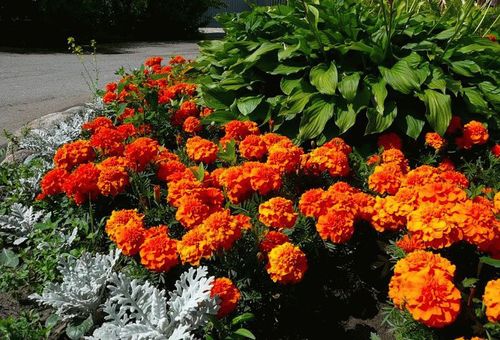
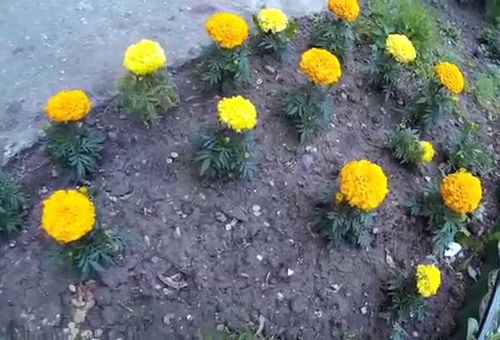

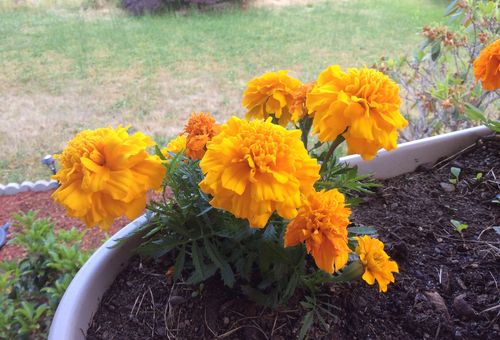
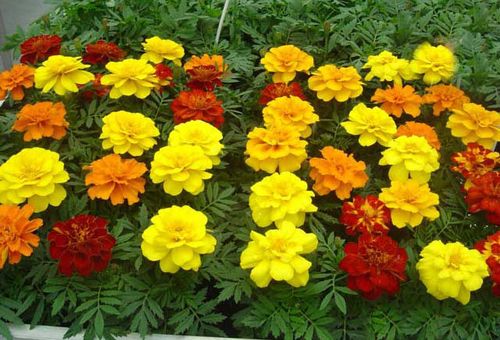
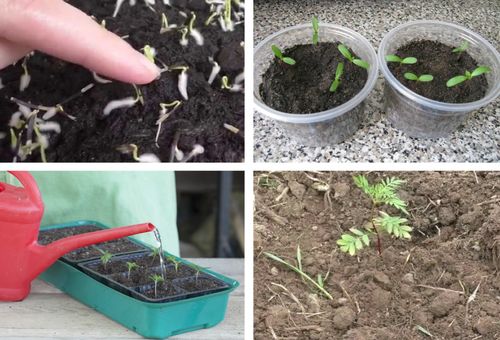
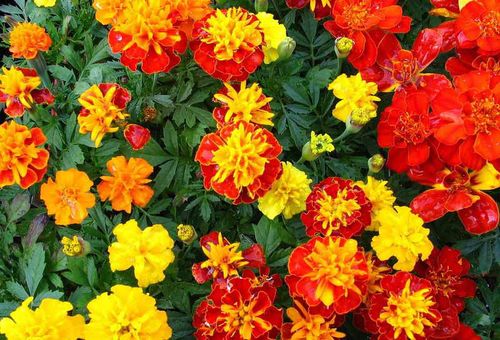
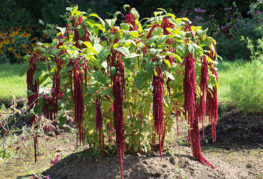
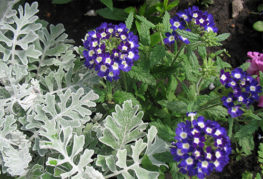
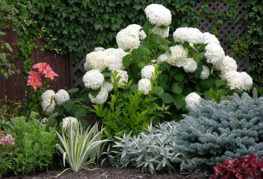

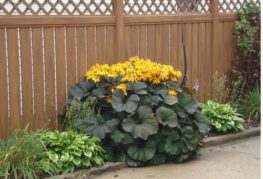
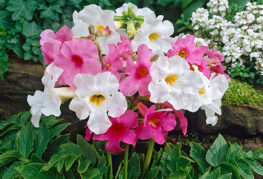
and will be published shortly.